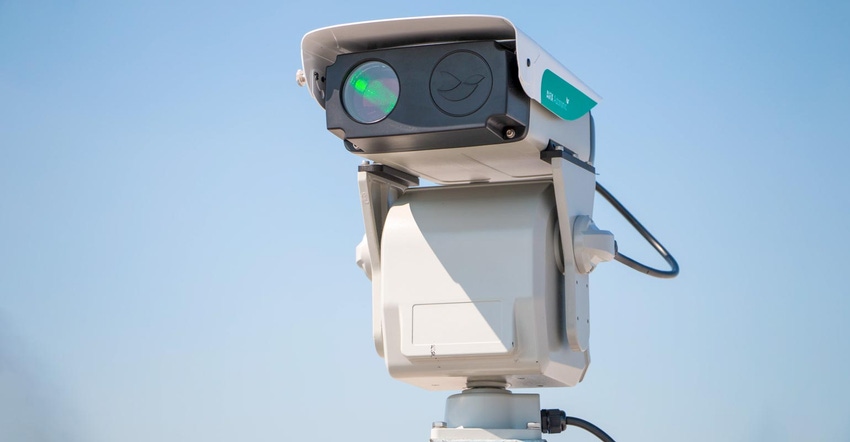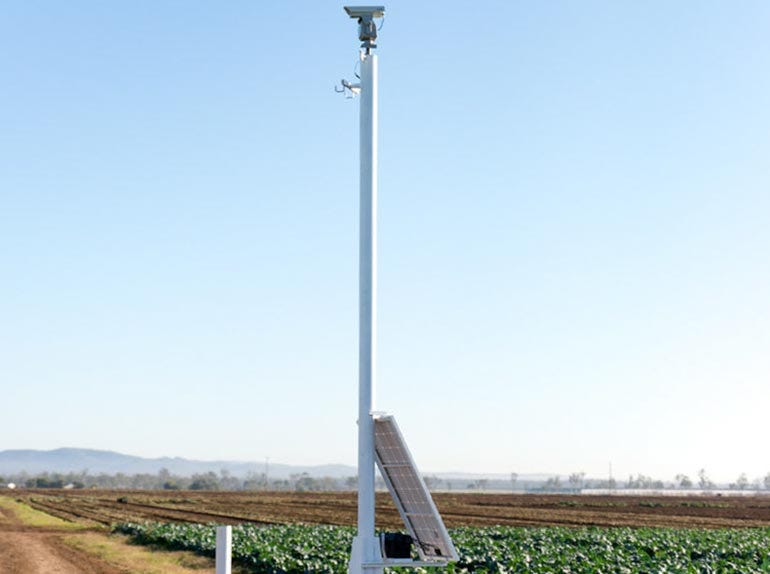October 16, 2020

I hate birds. The Alfred Hitchcock movie ruined my childhood as I ran from any blackbird. But it was my years living on a Minnesota farm dealing with dive-bombing barn swallows that solidified my emotion toward all birds.
Apparently, two barn swallows took up residence under the roofline ridge right above the front door to raise a family. Now, I can handle a few times of the pesky barn swallow nearly clipping my hair as I walked from the house to the car, but when those birds started going after my kids playing in the yard, well, it was time for action.
Enter my husband and a gun. Perhaps a little drastic, but in my defense, you didn’t hear my children screaming in fear. Let’s just say from a second-story perch, he made a great shot, literally killing two birds with one, uh, shell. Problem eliminated.
So when I saw an email touting an “environmentally friendly laser bird deterrent system,” I thought perhaps there was a better way to handle a fowl situation.
New tech solutions
Apparently, birds are more than just a nuisance. They are a big economic problem for farmers.
In Australia, Koala Farms estimates losing about $37,000 in vegetables every year from bird damage. The farm is 500 hectares across two locations in Queensland, and its crops were severely affected by Australian wood ducks eating the vegetables, as a result of increased duck migration.
So, farm owner Anthony Staatz tried an automated laser bird repellent, AVIX Autonomic Mark II. It looks like a state highway patrol radar gun, except it is mounted on a stand.
The Autonomic Mark II projects a green laser beam across a field of crops, posing as a threat to the birds and deterring them immediately. Koala Farms was so convinced it could work that it now covers two areas of the farm with four units.
Sold by Bird Control Group, the product works on birds threatening damage to corn seedlings, feedlot scavengers and vineyards. I was impressed with the scattering of birds at a dairy operation. All it takes is a one-time setup, and the laser turns on and off automatically, depending on the settings. See how it works below:
Farmers can view the system status via the Status & Control app by AVIX and switch it on and off remotely. They also receive push notifications via phone or email if the unit is disconnected from power. Track the system’s operating hours using a Bluetooth connection to see if the laser is performing the way it should.
According to Staatz, the laser bird repellent is a humane alternative to dealing with the duck problem. He says it saves him time and gives them peace of mind. “We don’t wake up to damaged crops.”
Already in the states
But it’s not only in Australia. In Illinois, Jerry Gaitsch uses the laser on his sweet corn crop. He tried a lot of other systems to eliminate birds that were causing up to 85% loss of crop.
In using the system, he found losses dropped to 15%. Gaitsch says it does not work perfectly on all birds, but the system paid for itself within the first two years.

REMOTE CONTROL: Even in areas without power, the automated laser bird repellent works with the help of solar power.

There are other laser deterrents on the market, some starting closer to $2,000. However, prices for automated laser bird deterrents may climb higher.
While it may prove a wise investment for the dairy, vegetable or grape industries, I’m not sure my husband would find it beneficial for the two barn swallows in Minnesota. All it took there was some cheap lead.
You May Also Like




